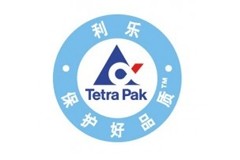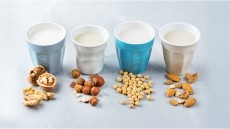TETRA PAK VIDEO EXCLUSIVE
Tetra Pak researches processing methods to tap ‘explosive’ coconut water trend
This content item was originally published on www.beveragedaily.com, a William Reed online publication.
The aseptically packaged coconut water trend began in Brazil in the 1980s, but sales in Tetra Pak packages have grown 26% on average from 2007-2011. The firm estimates that the global market is worth around €270m ($349m), driven primarily by Brazil and the US.
“The drink’s appeal is that is has low calorie content, natural sweetness, is cholesterol-free and tasty. It’s also very popular for its rehydrating properties,” Lai (pictured, and speaking in this company video), while on-the-go consumption also made it popular with active, health conscious consumers.
Tetra Pak’s recently established its Coconut Knowledge Center to handle customer requests for marketing and technology support, Lai said; aseptically packed coconut water is such a new category that the firm is going back to basics to understand its characteristics.
Cracking nuts…activating enzymes
Lai said the Center was working with the Science University of Malaysia to understand why coconut water was so sensitive, and had identified two enzymes that were activated the moment coconuts were cracked.
“They are responsible for the colour changes of coconut water, making it look visually unattractive. The enzymes also react in the presence of oxygen and, therefore, need to be processed as soon as possible,” Lai said.
“This information allows us to invest in processing innovations. We are now establishing processing methods that will be able to arrest the effects of these enzymes and provide a longer shelf life without compromising the nutrients and taste of the product,” he added.
Soy heart health claim
Tetra Pak first established its Knowledge Centers in the early 2000s, and the Soya Knowledge Centre in Singapore was the first. 25 food technologists, marketing, processing and packaging experts help clients develop, test and market beverages.
“In Southeast and Southeast Asia, our customers’ soya milk sales have grown by an average 21% per year in the last six years, since the Soya Knowledge Center was established in Singapore,” Lai said.
Globally, growth of soya milk in Tetra Pak cartons has grown by 6.2% annually during the same period, with a CAGR of 5.9% predicted for the next three years.
The Chinese have been consuming soya for 5,000 years, but soya- based products only really took off in Western countries in the last 20 years, thanks to a 1999 Food and Drug Administration (FDA) endorsement.
Thereafter, food labels could carry a health claim stating that a diet with 25g of soya protein (which is also low in saturated fat and cholesterol) may reduce heart disease risk.
‘Beany’ flavors bit dust
But Western consumers disliked the ‘beany’ flavor of soya drinks, Lai said, which presented a challenge to customers expanding this drinks category in these markets.
Tetra Pak worked with the University of Illinois to develop a novel extraction technology – the Tetra Alwin Soy System – able to deliver different flavour intensities to suit consumer preferences on different markets.
Instead of soaking beans (the traditional method), Lai said Tetra Pak’s method continuously ground beans and simultaneously extracted the soya base under different temperature parameters, to provide different flavour intensities.
A further two-step filtration system results in yields of 75% compared to other methods and yields of 65% at best.















